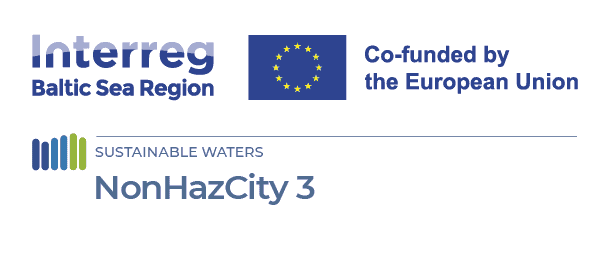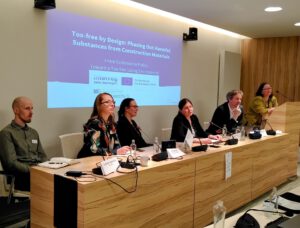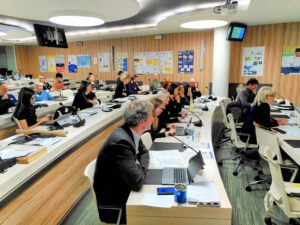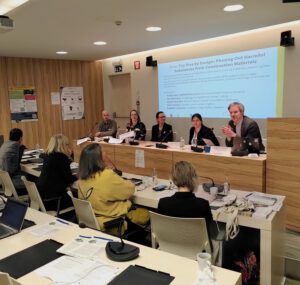
From Evidence to Policy: Advancing a Tox-Free Living Environment in Europe
19 November 2025
On 18 November 2025, experts from consumer organisations, research institutions, NGOs, and policymaking bodies convened at the Kartuizercenter in Brussels for the conference “From Evidence to Policy: Toward a Tox-free Living Environment.” The event brought together diverse stakeholders to present the latest scientific findings on harmful chemicals found in everyday environments and to discuss policy pathways that can better safeguard human health and ecosystems.
A Focus on Chemicals in Construction Materials
Among the key contributions to the programme was the panel session “Tox-free by Design: Phasing Out Harmful Substances from Construction Materials,” organised under the NonHazCity3 (NHC3) project. Construction materials are one of the most significant sources of chemical exposure in indoor environments, yet their impacts often remain overlooked. The session addressed this gap by highlighting the prevalence of hazardous substances in building products and their implications for sustainability, circularity, and public health.
Panelists presented core findings from NHC3, including evidence of widespread use of substances of concern in common materials, challenges with data transparency, and barriers to adopting safer alternatives. The discussion emphasised that the transition to tox-free construction must begin at the design stage—before harmful compounds enter buildings, supply chains, and ultimately, the environment.
Tools for Safer Construction: The Role of BVB
A key focus of the session was the Swedish Byggvarubedömningen (BVB) system, an established tool for assessing and promoting safer building materials. Presenters highlighted how BVB enables municipalities, architects, and developers to make more informed choices by providing independent evaluations of chemical content and environmental performance. The system was showcased as an example of how structured, evidence-based tools can support policy goals and help mainstream non-toxic construction practices across Europe.
Consumer Transparency and Ecolabeling
The panel also explored consumer-facing challenges, including the complexity of ecolabels, inconsistencies in product markings, and the continued need for accessible, reliable information about material composition. Participants stressed that empowering consumers—both professional and private—is essential for creating demand for safer products and for supporting regulatory change.
Panel Experts
The session was moderated by Eugeniy Lobanov (Coalition Clean Baltic, Sweden) and featured contributions from:
- Outi Ilvonen, German Environment Agency
- Mecki Naschke, World Future Council Foundation, Germany
- Grazvydas Jegelevicius, Baltic Environmental Forum, Lithuania
- Ilze Neimane, Ecodesign Competence Center, Latvia
Their insights provided a multi-country perspective on the policy, technical, and societal dimensions of reducing chemical pollution in buildings and urban environments.
Toward Evidence-Driven Policy
The NHC3 panel formed part of a wider dialogue throughout the conference: how to translate scientific evidence into effective, long-term policy action. Speakers and participants agreed that achieving tox-free, healthier living environments requires stronger collaboration between researchers, policymakers, and civil society. By highlighting practical tools, real-world data, and policy innovations, the event marked an important step toward aligning European practices with the goal of eliminating harmful chemicals at the source.









